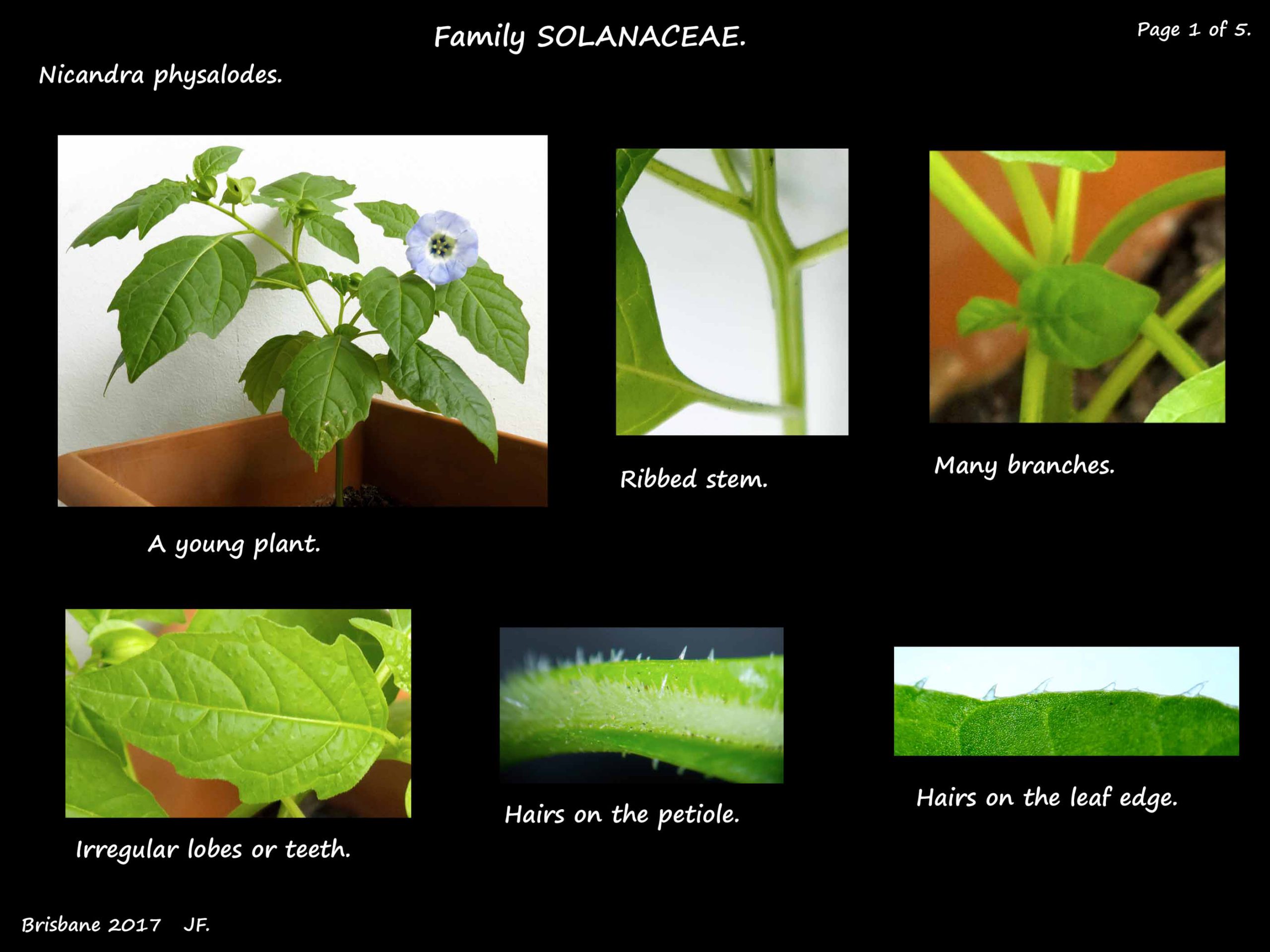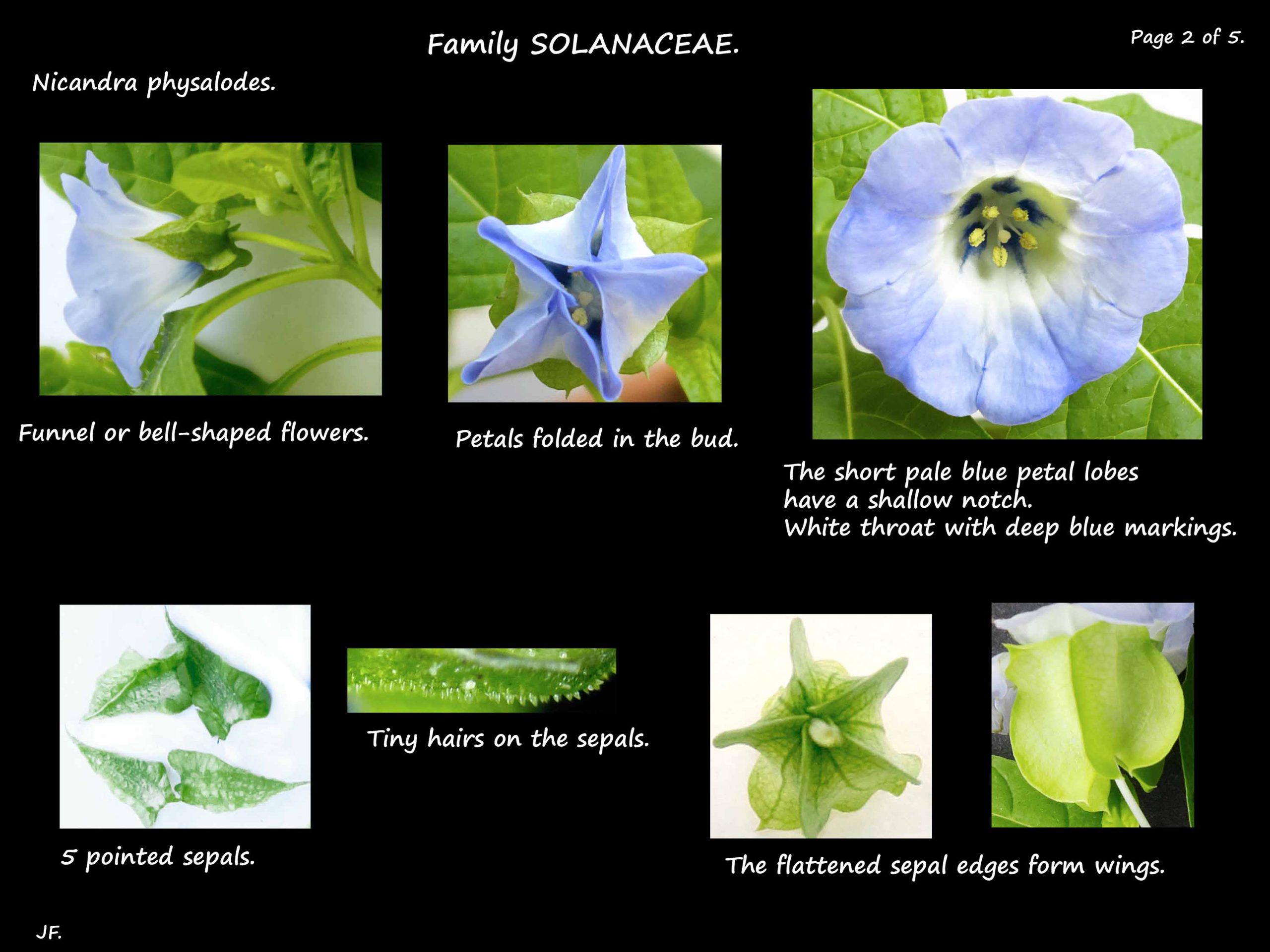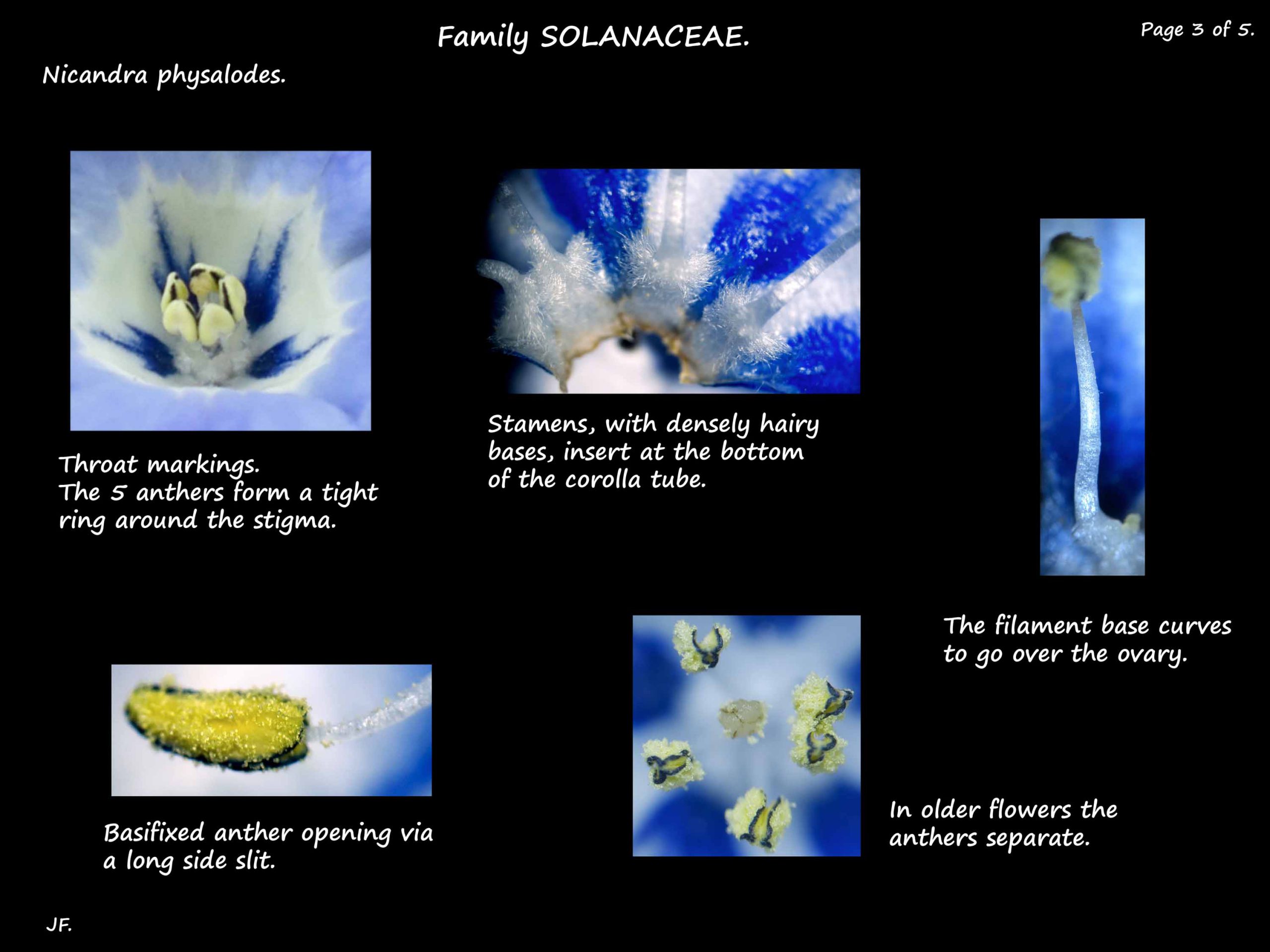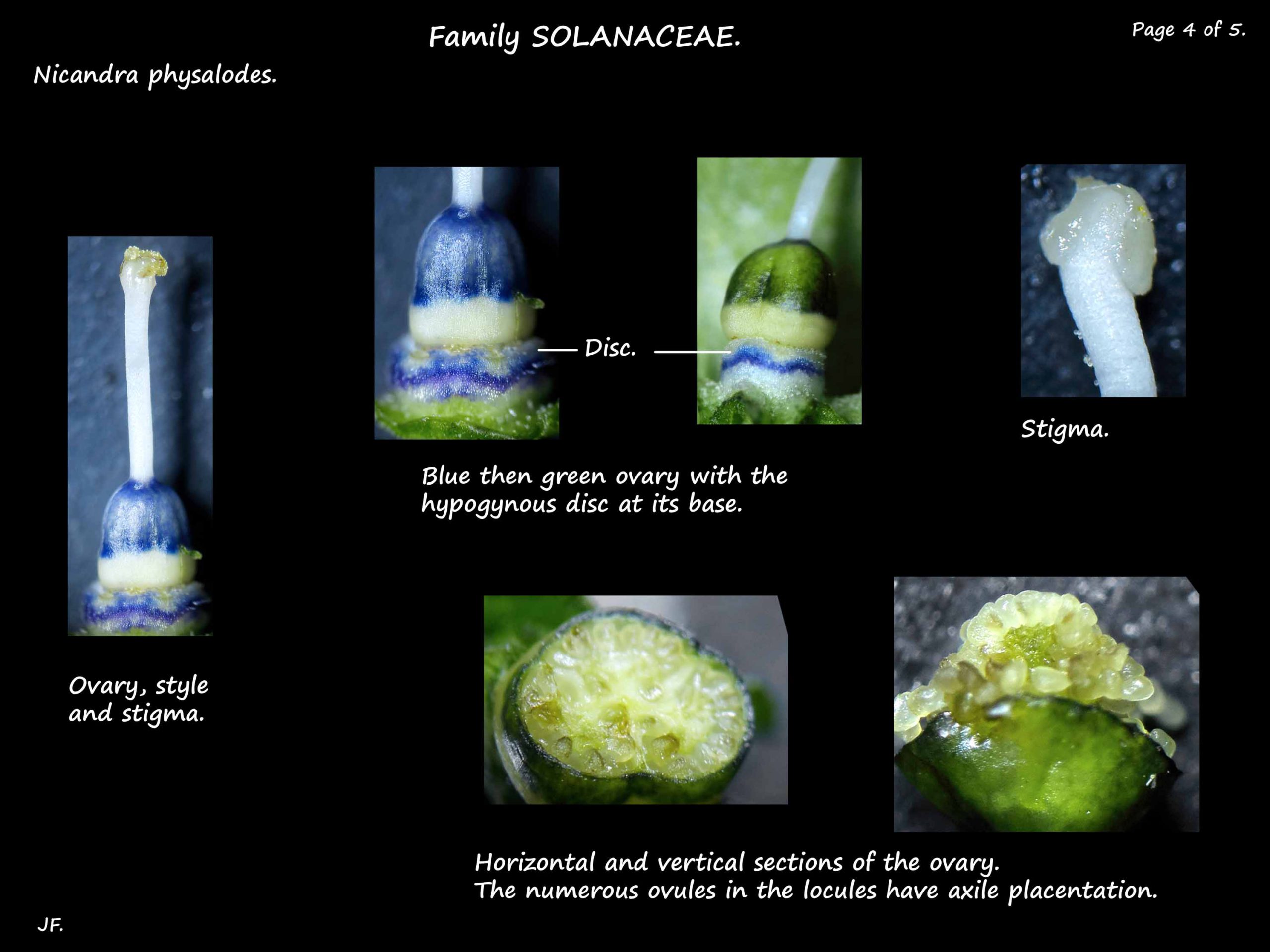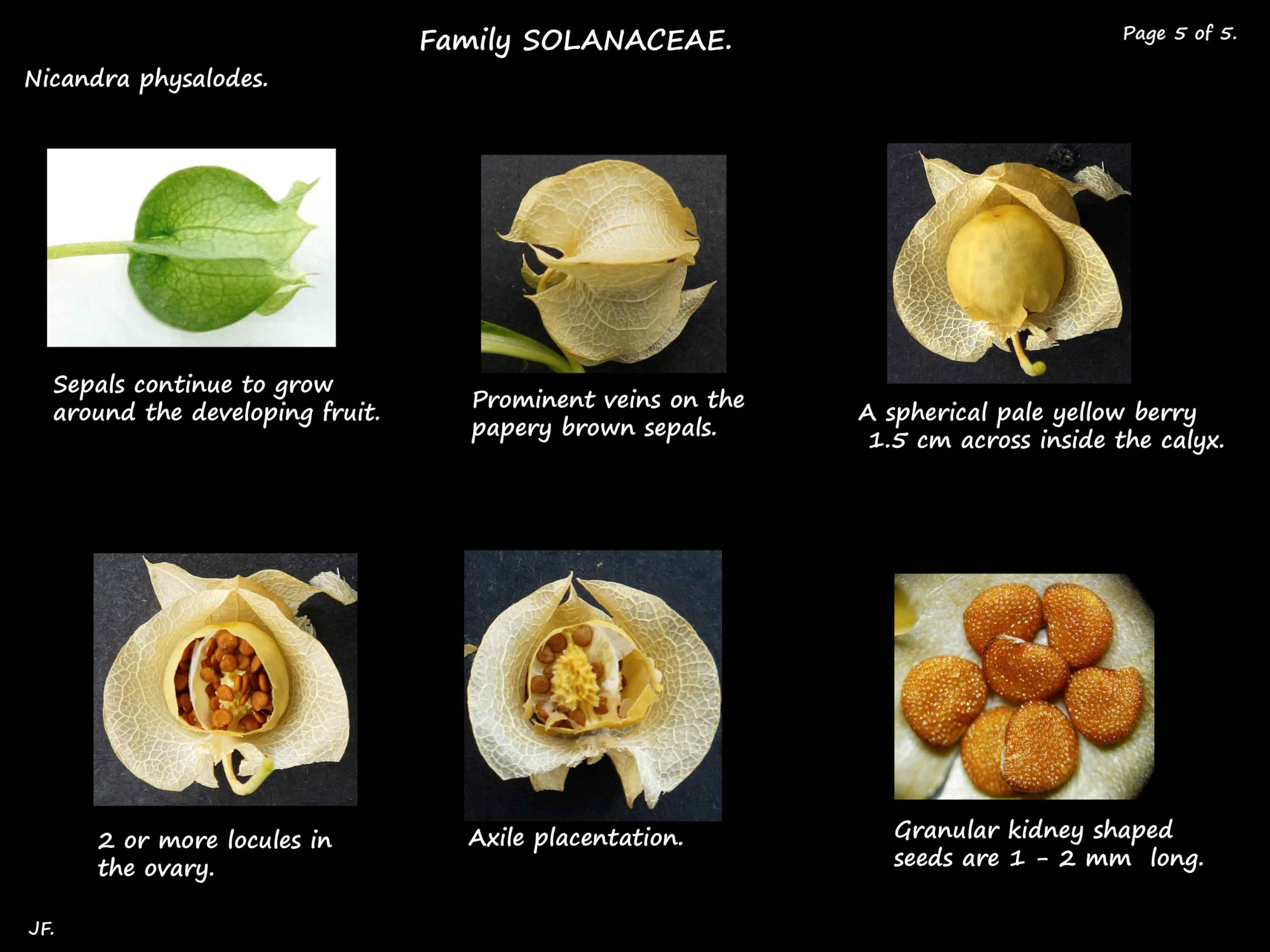Nicandra physalodes.
Family Solanaceae > Subfamily Solanoideae > Tribe Nicandreae.
Common names include Apple of Peru or Chinese lantern.
It is from South America but widely naturalised around the world.
It is cultivated, and a fairly common weed, in S. E. Queensland.
It is a much branched annual herb up to 1 to 2 m high and 1 m wide.
The hollow stems are ribbed.
The leaves are alternate but towards the branch ends are closer and sub-opposite.
Petioles, with some simple hairs, are up to 9 cm long.
The blades are variable being narrowly to broadly ovate.
The edge has coarse, irregular teeth or lobes and the tip tapers to a point.
A few leaves may have a smooth edge.
There are small, scattered hairs on the edge and upper surface.
Inflorescences, in or near the leaf axils, are solitary flowers up to 5 cm across.
The bell-shaped flowers are on stalks (peduncles) up to 2.5 cm long.
Initially holding the flower upright the pedicel later bends and the flowers nod.
There are 5 green, heart-shaped sepals 2 – 3 cm long.
Towards the base their sides are flattened together forming longitudinal wings.
The calyx becomes inflated to encloses the growing fruit.
This gives it the appearance of a papery, brown lantern.
The bell-shaped flowers only open for a few hours each day.
There are 5 petals up to 3 cm long.
Their bases are fused into a tube, narrow at the bottom, that is enclosed by the calyx.
Each short lobe has a shallow notch.
The throats are white and the lobes a pale blue.
There may be various dark blue markings inside the throat.
Some flowers are all white or are purplish instead of blue.
The 5 stamens are inserted near the base of the corolla tube.
The filaments, up to 3.5 cm long, have a densely hairy base.
Their wider, flattened bases curve over the ovary.
The basifixed anthers, opening via longitudinal slits, may have a few hairs.
Initially the anthers converge around the stigma but later separate.
Inside the stamens is an annular disc with a slightly lobed top.
The superior ovary, of 2 fused carpels, has up to 5 or 6 locules due to false septa.
Each locule has numerous ovules.
The stout white style has a lobed, capitate stigma.
The fruit are globular pale yellow berries up to 2 cm across.
They are enclosed in the enlarged, pale brown, papery calyx that has prominent venation.
There are commonly 3 or 4 chambers with many 1 to 2 mm brown kidney-shaped seeds.
N. physalodes is generally accepted as the sole species in the genus.
Some say there are 3 species but there is little or no information on them.
The Plant List says 1 species and World Flora Online says there are 3.
Nicandra john tyleriana has a 5 deep purple spots around the top of the corolla tube,
yellow anthers on short filaments and a cream ovary and style.
The other species is Nicandra yacheriana.
J.F.
